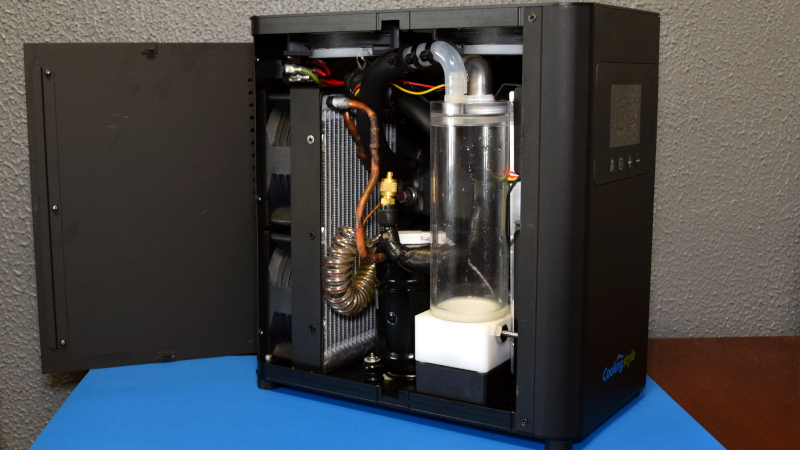
Every week, the Hackaday tip line is bombarded with offers from manufacturers who want to send us their latest and greatest device to review. The vast majority of these are ignored, simply because they don’t make sense for the sort of content we run here. For example, there’s a company out there that seems Hell-bent on sending us a folding electronic guitar for some reason.
At first, that’s what happened when CoolingStyle recently reached out to us about their Cooler Max. The email claimed it was the “World’s First AC Cooler System For Gaming Desktop”, which featured a “powerful compressor which can bring great cooling performance”, and was capable of automatically bringing your computer’s temperature down to as low as 10℃ (50°F). The single promotional shot in the email showed a rather chunky box hooked up to a gaming rig with a pair of flexible hoses, but no technical information was provided. We passed the email around the (virtual) water cooler a bit, and the consensus was that the fancy box probably contained little more than a pair of Peltier cooling modules and some RGB LEDs.
 The story very nearly ended there, but there was something about the email that I couldn’t shake. If it was just using Peltier modules, then why was the box so large? What about that “powerful compressor” they mentioned? Could they be playing some cute word games, and were actually talking about a centrifugal fan? Maybe…
The story very nearly ended there, but there was something about the email that I couldn’t shake. If it was just using Peltier modules, then why was the box so large? What about that “powerful compressor” they mentioned? Could they be playing some cute word games, and were actually talking about a centrifugal fan? Maybe…
It bothered me enough that after a few days I got back to CoolingStyle and said we’d accept a unit to look at. I figured no matter what ended up being inside the box, it would make for an interesting story. Plus it would give me an excuse to put together another entry for my Teardowns column, a once regular feature which sadly has been neglected since I took on the title of Managing Editor.
There was only one problem…I’m no PC gamer. Once and awhile I’ll boot up Kerbal Space Program, but even then, my rockets are getting rendered on integrated video. I don’t even know anyone with a gaming computer powerful enough to bolt an air conditioner to the side of the thing. But I’ve got plenty of experience pulling weird stuff apart to figure out how it works, so let’s start with that.
Promising Pedigree
While I waited for my Cooler Max to make its way across the ocean, I decided to look a bit into the company itself. Browsing their website, you’ll find an impressive array of diminutive water chillers used for things like cooling industrial lasers or high-performance servers. As explained on the website, the key to CoolingStyle’s product line is their palm-sized compressor, which lets them squeeze an entire refrigeration system into a box that can fit into a standard server rack.
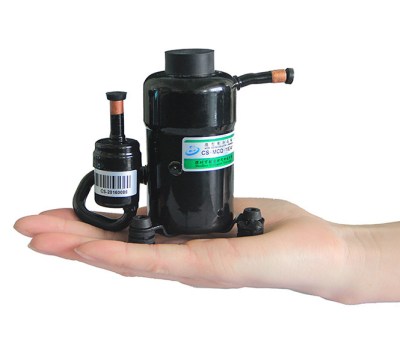

Pulling the manual for one of their chillers, we can see that the control panel used is identical to the one shown in the promotional images for the Cooler Max. At this point, I was actually getting pretty excited — this thing was looking more and more like the real deal.
In fact, one of the chillers offered on the CoolingStyle, the Q Series Micro Water Chiller, appeared to be very similar to the overall layout of the Cooler Max. Could it be that this company took one of their high-end industrial cooling devices, retooled it for the gamer crowd with some RGB LEDs?
An Imposing Machine
I have to admit, as soon as I got the Cooler Max out of the box, I was impressed. The thing is as large as a mid-sized desktop PC, and is built like a tank. There are a few fit and finish issues here and there with the case, but nothing that can’t be forgiven considering it’s a pre-release prototype.

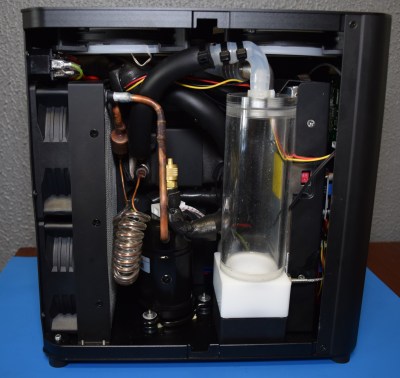
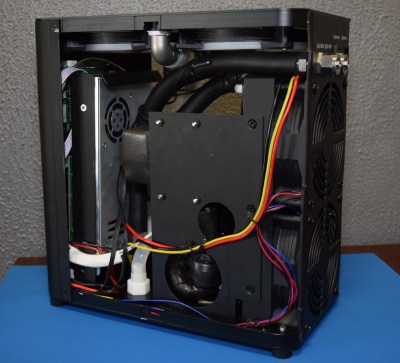
In terms of construction, it’s actually very similar to a desktop PC case, with sheet metal side panels that slide off once you remove the rear thumbscrews. The front and back panels are also sheet metal, while the top and bottom appear to be injection molded plastic. In fact, I wouldn’t be surprised if it’s some kind of jellybean PC case that’s been customized, as there’s even a support panel on one side that looks like it could have been intended to hold a motherboard.
Electronics
Towards the front of the Cooler Max is a Mean Well LRS-350 power supply providing 24 V to the compressor and most of the electronics, and around the other side we can see a common adjustable regulator board that’s been set to 5 V and is connected to the dual 120 mm RGB fans in the top of the unit. As the main control board for the compressor has a functional 5 V rail already, the addition of the separate regulator seems to be a bit of a bodge; as if the onboard regulator wasn’t up the task of handling the large light-up fans. In any event, I’d be surprised if this wasn’t changed for the production units — even just dropping down to a fixed 5 V regulator would be cheaper.

The compressor control board has quite a bit going on, and judging by all the unused connectors, has considerable untapped potential. There’s clearly a serial port right at the top of the board, which could be a subject of future experimentation. Overall the construction looks quite nice here, and I appreciate the little details like the insulated spade connectors. The relays could be a point of potential failure down the line, and though they aren’t socketed, swapping them out wouldn’t be terribly difficult.
On the inside of the front panel, we have a second PCB. This is the one that appears to be featured in most of CoolingStyle’s products, so as you might expect, it again features a number of unused connections considering this relatively simple application.
While the two main ICs have regrettably had their labels removed, the pair are obviously a microcontroller and a dedicated LCD controller. Note the clearly marked SWDIO/SWCLK pins on the bottom header: that’s a Single Wire Debug (SWD) interface, and a decent hint that our mystery MCU is in fact an STM32. Like the previously mentioned serial port, this interface is ripe for future experimentation. Matthew [wrongbaud] Alt has put together some excellent write-ups on the kind of information that can be gleaned from SWD, for those not familiar with ARM’s answer to JTAG.
The conformal coating on the board is a nice touch given the potential for moisture, and the screw terminal connection for the thermocouple was a welcome surprise. Small details, but they speak to the overall build quality.
Water Cooling System
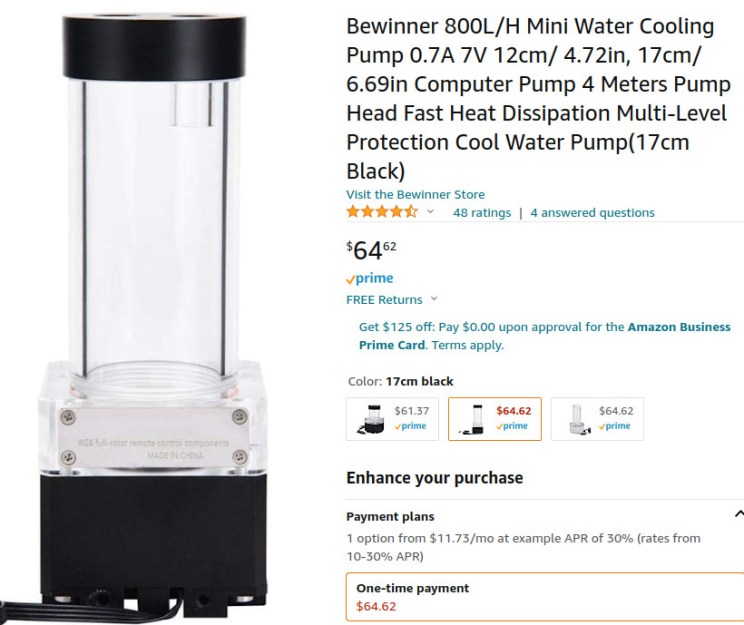 I won’t spend much time on this since, as far as I can tell, this part of the Cooler Max looks like it’s completely off-the-shelf. While I obviously don’t have one to compare against, I’d be surprised if this is the kind of thing you’d find in any of their professional chillers; and is likely one of the cost-cutting measures they’ve utilized to create this more consumer-targeted device.
I won’t spend much time on this since, as far as I can tell, this part of the Cooler Max looks like it’s completely off-the-shelf. While I obviously don’t have one to compare against, I’d be surprised if this is the kind of thing you’d find in any of their professional chillers; and is likely one of the cost-cutting measures they’ve utilized to create this more consumer-targeted device.
There are no identifying marks on the water cooling components, but very similar units can quickly be found online. There may have been some custom modifications done, for example adding the port for the thermocouple, but certainly the pump, fittings, and reservoir are all standard components that you’d find inside any water-cooled gaming PC. Not that there’s necessarily anything wrong with that.
Refrigeration Cycle
So at this point, it should be clear that the Cooler Max really is a tiny (relatively speaking) refrigeration unit. Just like an air conditioner, it’s got a compressor and a sizable condenser paired with large fans to keep it cool. But the difference is that, instead of blowing cold air, this device is designed to pump cold water.
So rather than an evaporator coil with another set of fans blowing across it, the Cooler Max uses a heat exchanger to cool the water that’s being pumped through the internal reservoir. Unfortunately the nature of the soldered copper connections on these sort of refrigeration units makes it impossible to take them fully apart without releasing the refrigerant, so we can’t get a very good look at any of these components in isolation.
But with the water reservoir removed, and the power supply moved to the side, we can get a fairly good overview of all the core components. The silver radiator in the rear is the condenser, the black cylinder mounted to the bottom of the case is CoolingStyle’s miniature compressor, and the foam-wrapped box at the center of the image is the heat exchanger. The thicker insulated tubes are for water, and if you look at the top of the image near where the AC power comes into the unit, you can see the bulge of the flow sensor which it used to determine how much water is actually being pumped through the system.
Impressively Repairable
Before wrapping things up, I think it’s worth noting that the Cooler Max is perhaps one of the most serviceable devices we’ve seen during this teardown series. Replacements for so many of the components, from all of the water cooling gear to the fans and power supply, can be picked up on your online retailer of choice without jumping through any hoops.
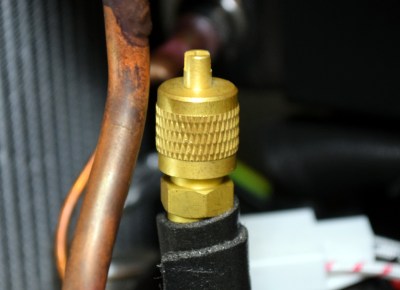
The design and construction of the unit is such that, as you’ve see here, it can be taken almost entirely apart with nothing more exotic than a screwdriver. All the electrical connections are socketed or screw-down, and there was’t a dab of glue anywhere to be seen inside the thing.
Incredibly, they even included a service port for adding refrigerant, which is something you generally have to hack in yourself. The compressor uses R134a, which at least here in the United States, you can simply pick up from the auto parts store.
Of course, being a prototype, some of these features could be due to its one-off nature. The final units might strip out the service port and replace half the internals with proprietary bits and bobs. Maybe. But we can dream.
OK, But Does It Work?
As I said at the start, I’m no PC gamer. Nor is this a website about PC gaming. So I’m not qualified to pass judgment on the Cooler Max in that context. That will likely upset some people, perhaps not least of which the fine folks at CoolingStyle.
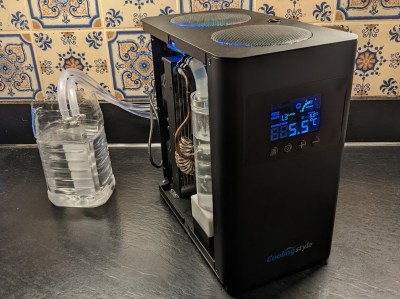
For the record however, I did hook it up to a basic water block to do some simple tests — it definitely gets cold in short order, and when I dunked the block into a bucket of hot water the Cooler Max revved up like mad and brought it down to below room temperature in a minute or two.
I can also tell you that the Cooler Max appears to be very well made, and designed so that you can open it up to fix it, and potentially modify it, without danger of destroying it in the process. That’s a trait we don’t see often enough, so respect to CoolingStyle where its due.
Considering there’s nothing else quite like it on the market, it’s hard to judge the introductory Kickstarter price of $699. It’s a lot of money. But the closest thing you can really compare it with on a technical level would be a small travel air conditioner, and shopping around, they cost just about as much. Of course, at the end of the day, if you’ve got a gaming computer powerful enough that you’re even contemplating something this elaborate for your cooling needs, that number probably isn’t going to break your budget.
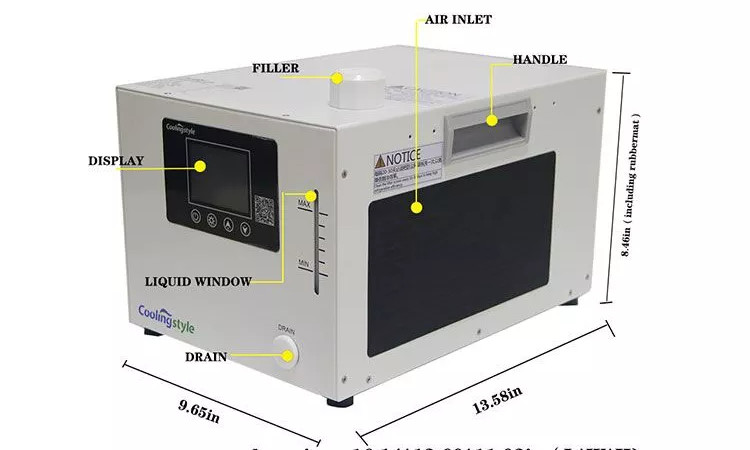

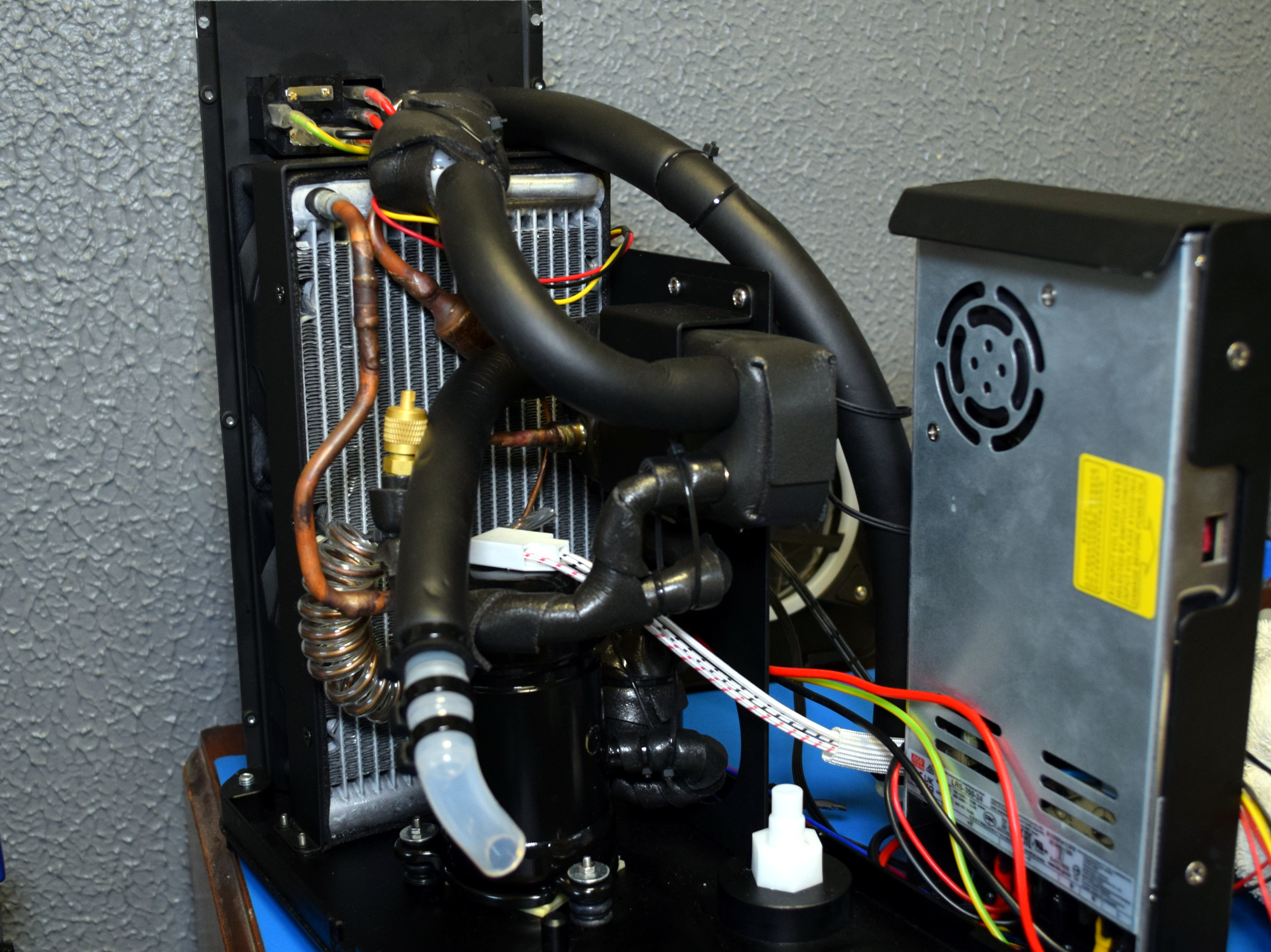
0 Commentaires